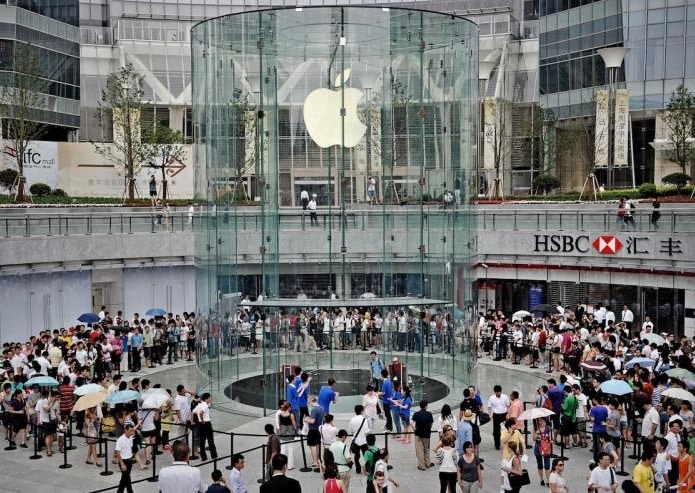
This
forms part of its expansion plans of 25 stores over the next two
years.
The
company launched its ‘Westlake’ store, so named because of a body
of water which can be found in the center of the capital. The launch
included a video explaining their work with a local calligrapher and
a Tweet from the company’s chief executive, Tim Cook, stating that
something new is starting in Hangzhou, China.
The
company’s expansion plans in ‘tier two’ cities in China is
continuing regardless of the reported deal which will give Beijing
officials permission to do ‘security checks’ on all Apple’s
products sold in China. This may result in allowing officials to
gain access to Apple’s operating system course code. A recent
visit by the chief internet regulator in China to the company’s
California campus indicates the importance placation of the
regulators could have for the future growth of the company.
The
recent quarterly growth of Apple in China has been hampered by
product launch delays, which were caused by regulatory problems,
competition from Xiaomi and others, and a delay in the link with
China Mobile. Apple has changed the method used to break down its
income. For now, ‘retail’ is categorized separately to other
regional sales from third-party and online sellers.
Company
officials and analysts are projecting that China could become Apple’s
largest growth market, particularly in view of the slowing down of US
and European sales, due to a saturated market. It is expected that
Apple will announce that it has sold more iPhones in China than in
the US over the past year. This would be a historical first for the
company.
China
is experience fast growth in the mobile market, but it is not alone.
Ericsson has predicted that global mobile subscriptions will increase
from 6.8 billion during 2014, to 9.2 billion during 2019, with a huge
portion of the growth being from India and China. It is stated that
the top five countries were responsible for 50% of all net mobile
additions during 2014s first quarter, with India as the leader
showing figures of 28 million, and China in second place with 19
million.
The
strategy used by Apple in India has remained confused thus far. They
opted to sell an older iPhone version, which is quite incompatible
with its newest operating system. This resulted in frustration for
the wealthy globe-trotting Indian users it was targeting. The laws
in India related to purchasing materials from domestic manufacturers
have hampered the opening of an Apple store in India. The country’s
low per-capita income implies that most of the population cannot
afford an iPhone or is unlikely to be able to do so in the future.
However,
this does not apply to China. Smartphone sales are starting to ebb,
but users are able to upgrade to iPhones.